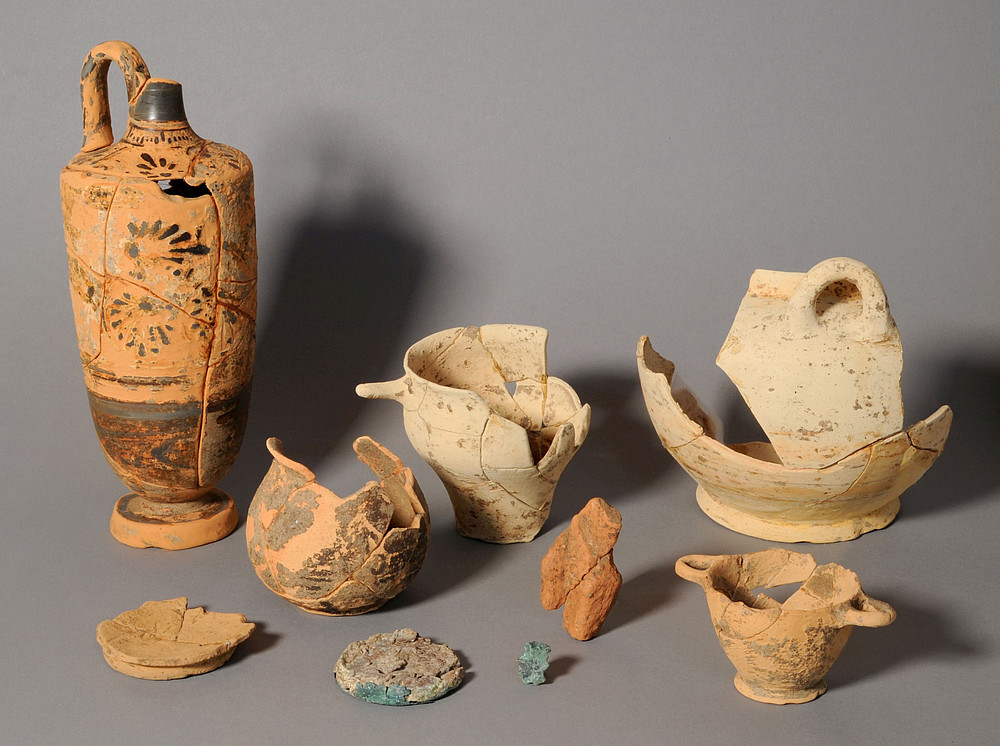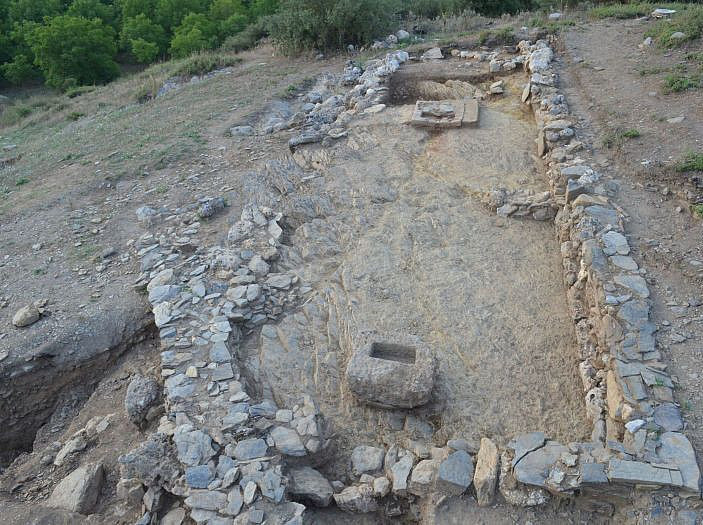6,500 Years of Solitude? Investigating Pottery from Pheneos
Since October 2021, the research work has been taking place as part of the FWF project "6,500 Years of Solitude? Investigating Pottery from Pheneos"(FWF individual project no. P 34385), as a follow-up project to the first FWF project of the years 2017 - 2021. Based on the foundations laid in this previous project (Pheneos in Northeastern Arcadia - An Undiscovered Town), the aim is now to identify and characterize local pottery production and distinguish it from regional and supra-regional imports over the entire period of use of the city hill, i.e. from the Neolithic to the early modern period. While proven archaeological methods will be used for this purpose, including the classification of all ceramic material into macroscopic fabrication groups, the FWF project will also enable the results obtained to be verified and supplemented by scientific methods.

Petrographic investigations, SEM analyses and NAA are carried out on selected samples of the Neolithic, Bronze Age, historical and post-antique finds. The University of Patras, under the direction of Ioannis Iliopoulos, is conducting geological surveys in the basin in order to be able to reliably link the findings on the raw materials used with the Pheneos plateau. By the end of the project in fall 2024, it will be possible to make statements about the persistence of local production and, for the first time, obtain information about the socio-economic situation of the area. Over the centuries, it will thus be possible to depict change and continuity both with regard to the places of origin of the pottery that came to Pheneos from outside the basin and with regard to locally predominant techniques and vessel forms.

Pheneos in Northeastern Arcadia - An Undiscovered Town
Funding for the processing of finds began in 2017 with the approval of the first individual FWF project under the direction of Elisabeth Trinkl, entitled "Pheneos in Northeastern Arcadia - An Undiscovered Town"(FWF Individual Project No. P 30446), which enabled a basic initial survey and investigation to be carried out, allowing the features from the excavations to be classified more precisely and individual complexes to be roughly dated. At the end of the project in autumn 2019, this made it possible to attribute the intensive use of the hill in the 1st millennium BC to the presence of several sanctuary complexes, while in the Middle Ages and modern times the eastern plateau, on which a church is located today, was at least partially used as a cemetery, possibly already in the immediate vicinity of a church at that time.
In addition, it was possible to clarify the dating of the fortification wall, which was probably built in the early 3rd century BC according to the pottery from the foundation area. The beginning of human activity on the hill of Pheneos, on the other hand, can be traced back to the Neolithic period and continued - particularly intensively in the Middle Helladic - almost without interruption until the Hellenistic period. Careful examination of the pottery also provided the first indications of local products and allowed conclusions to be drawn for the first time about the economic connections and circumstances of Pheneos in prehistoric and historical times.
Five-year research cooperation
The five-year research collaboration (2011 to 2015) between the 37th Ephorate of Prehistoric and Classical Antiquities in Corinth and the OeAI Athens, represented by the University of Graz, aimed to uncover the ancient fortification wall on the northern slope of the hill following the cleaning campaign of 2008/2009. Among other things, its course was to be clarified and the investigation of the towers and the search for a possible gate were to be continued. After the excavation work was completed in 2015, the annual research visits to Pheneos were dedicated exclusively to processing the finds.
Since 2016, the extensive pottery and bronze finds as well as the bone and stone artefacts from the excavations on the fortification wall have been documented and researched in annual museum campaigns. This has resulted in several master's and doctoral theses. A comprehensive publication of all the excavation results in several volumes is planned for the 2020s.

